Welcome to the aromatic world of herb gardening, where delightful scents and flavors await at your fingertips! Whether you’re a budding gardener just starting out or a seasoned green thumb looking to expand your repertoire, this guide offers a treasure trove of affordable tips designed to make your herb garden flourish. Here, the joy of nurturing plants blends seamlessly with the practical benefits of having fresh herbs to enhance your culinary creations and elevate your everyday meals.
Imagine stepping into your garden to harvest a handful of fresh basil for your homemade pesto or some fragrant mint for a refreshing iced tea. These design tips are crafted to help you cultivate a thriving herb garden without breaking the bank, ensuring you can enjoy these simple pleasures. From clever space-saving solutions to cost-effective ways to enrich your soil, this guide empowers you to achieve a bountiful harvest, regardless of your gardening experience or budget constraints.
With these affordable herb gardening tips, you’ll find the confidence to transform even the smallest patch of earth into a verdant oasis. The satisfaction of nurturing your own plants and reaping the rewards of your efforts is unparalleled, and this guide is here to make that experience both attainable and enjoyable. Dive in, and discover how a little creativity and knowledge can lead to a garden that not only feeds your family but also feeds your soul.
Repurpose Containers for Planting
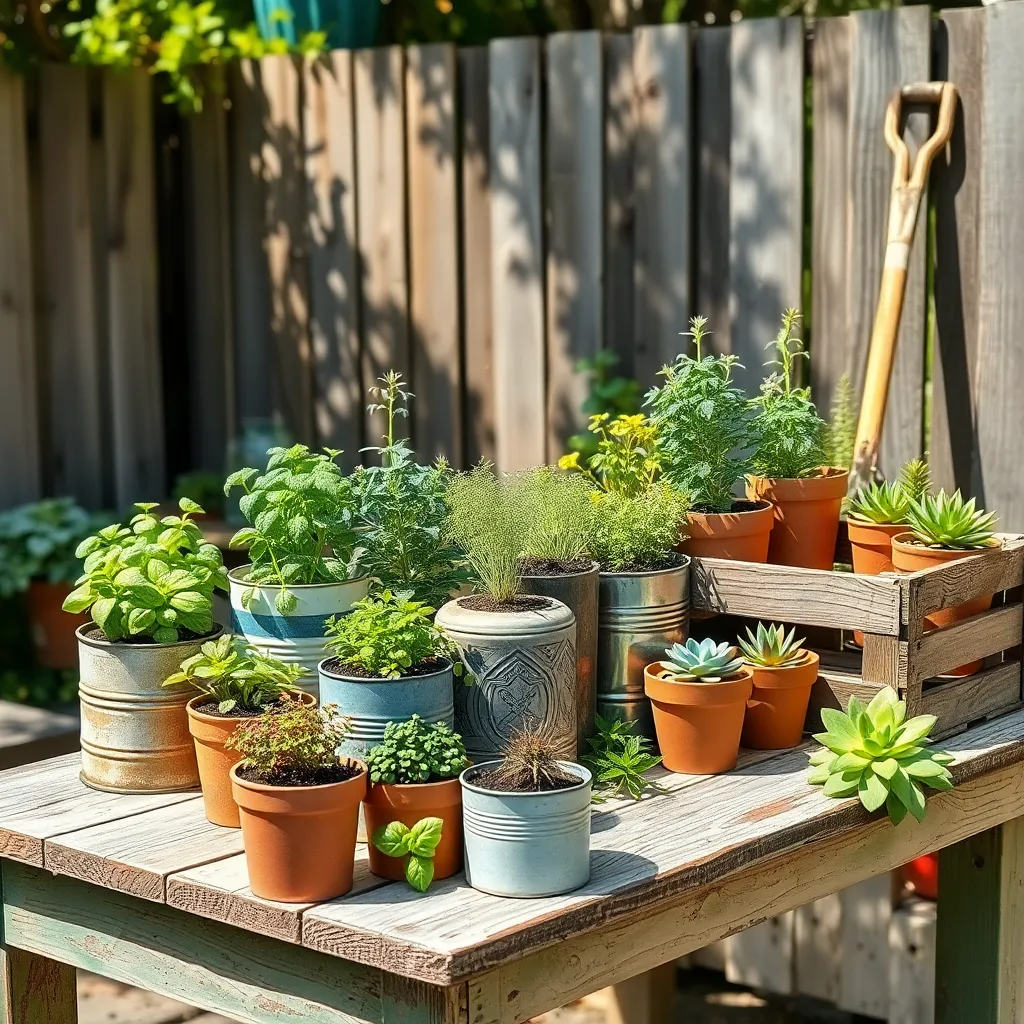
Repurposing containers for planting herbs can be both cost-effective and environmentally friendly. Look around your home for unused items such as old buckets, wooden crates, or even chipped teapots that can be transformed into unique plant containers.
Ensure any container you choose has adequate drainage holes to prevent waterlogging, which can harm your herbs. If your chosen container lacks drainage, consider using a drill to make a few small holes at the bottom.
When selecting soil for your herbs, it’s crucial to use a well-draining potting mix. This will provide the necessary nutrients and prevent the roots from sitting in water, which could cause root rot.
Consider adding a layer of gravel or small stones at the bottom of your containers to further improve drainage. This is especially useful for herbs like rosemary and thyme, which prefer drier conditions.
For those with a bit more experience, try using larger containers to create a mixed herb garden. Position taller herbs like basil at the back of the container and smaller ones like chives at the front to ensure each plant gets enough sunlight.
Create DIY Compost for Fertilizer
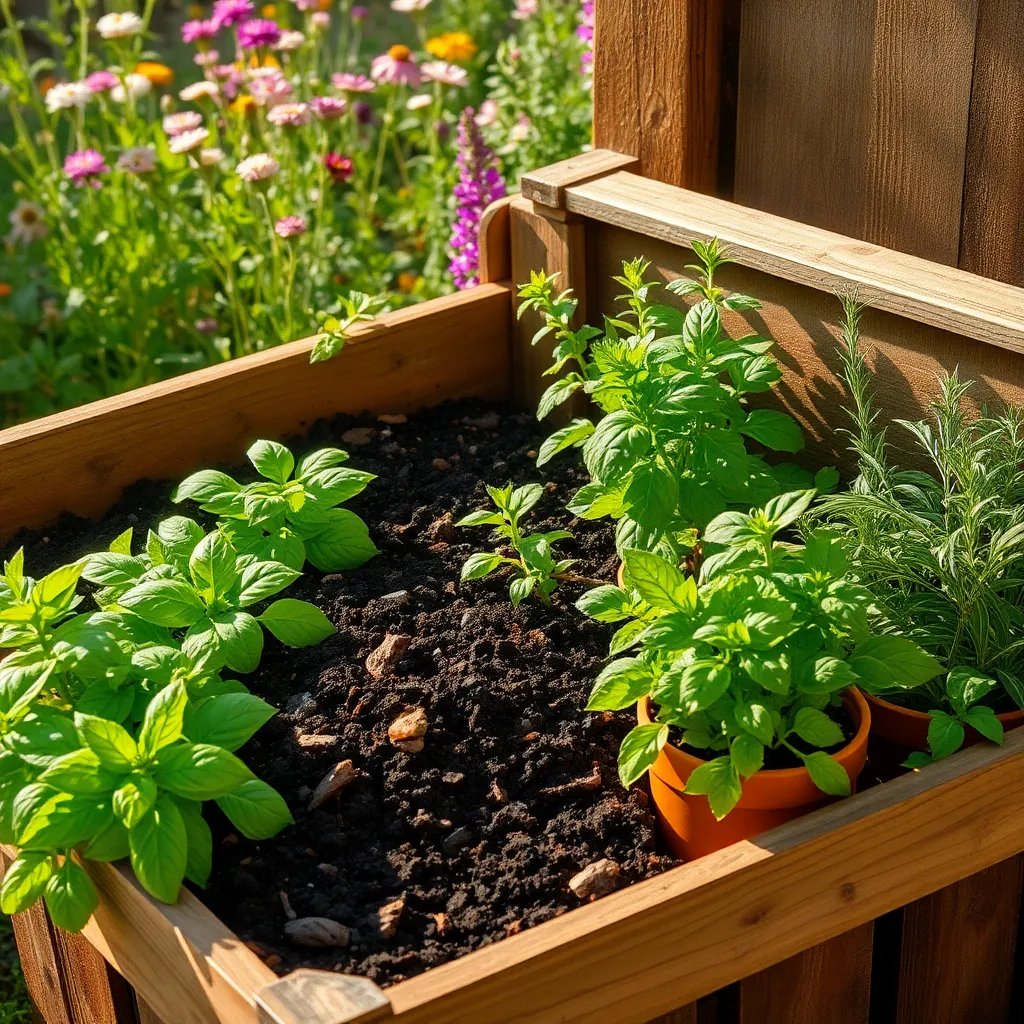
Creating DIY compost is an excellent way to enrich your herb garden without spending a fortune. Start by gathering kitchen scraps like fruit peels, vegetable trimmings, and coffee grounds, which are rich in nutrients.
Layer these organic materials with brown matter such as dried leaves or shredded newspaper to maintain a healthy carbon-to-nitrogen ratio. This balance is essential for producing high-quality compost that can be used as a natural fertilizer for your herbs.
Turn your compost pile every few weeks to aerate it and speed up the decomposition process. Keep the compost moist but not waterlogged, as this helps microorganisms break down the materials more effectively.
After a few months, your compost should be dark, crumbly, and smell earthy, indicating it’s ready to use. Incorporate this nutrient-rich compost into your herb garden soil to boost growth and vitality.
For those with limited space, consider using a compost bin or tumbler to contain the process neatly. This method is perfect for urban gardeners who want to maximize their small garden areas while still benefiting from homemade compost.
Start Herbs from Seed
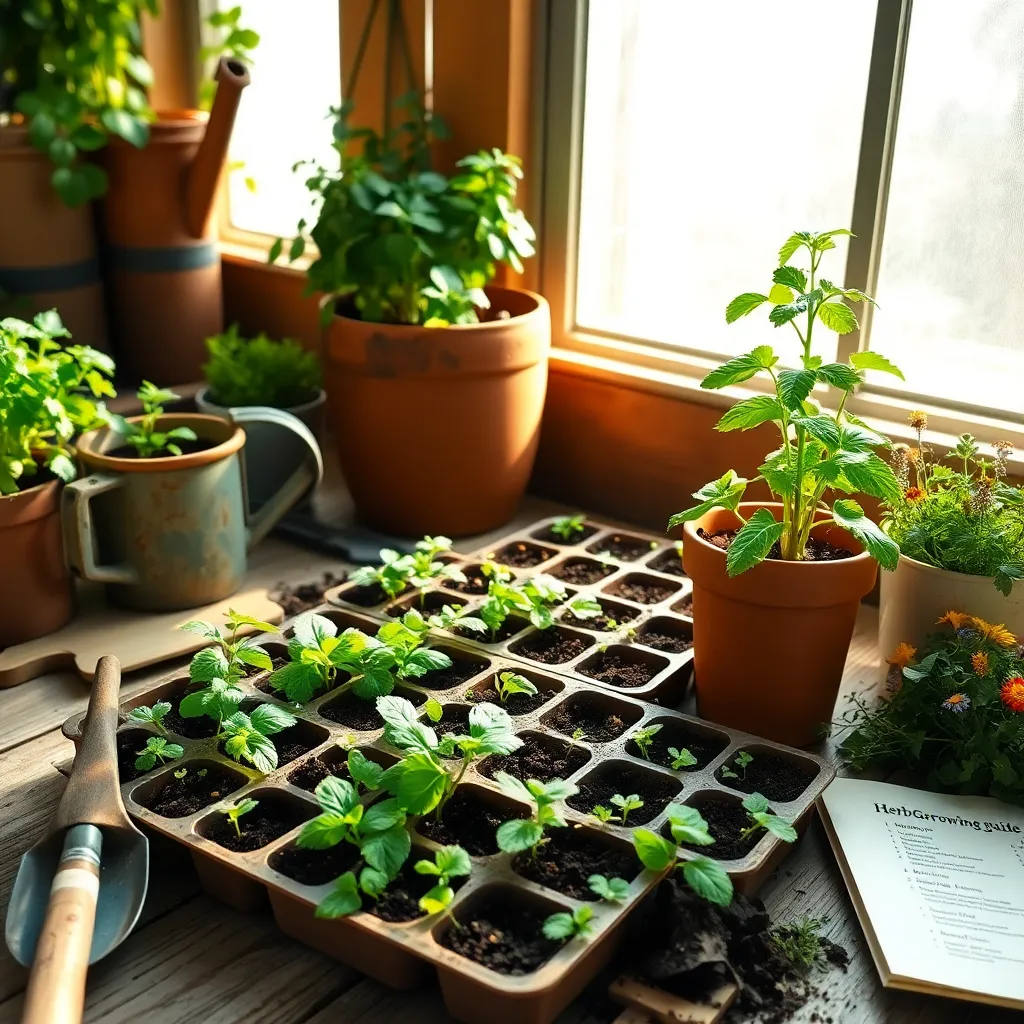
Starting herbs from seed is a cost-effective way to grow your own flavorful plants at home. To begin, you’ll need a few basic supplies: seed trays or small pots, high-quality potting mix, and of course, your herb seeds of choice.
Choose herbs that are well-suited for growing from seed, such as basil, cilantro, and parsley. These herbs germinate quickly and are forgiving for beginners, making them perfect for those new to gardening.
Fill your seed trays or pots with a light, well-draining potting mix that retains moisture without becoming waterlogged. A mix containing perlite or vermiculite is ideal as it provides aeration and prevents the roots from sitting in water.
For successful germination, plant your seeds at a depth of about twice their size and gently cover them with soil. Be mindful not to press the soil down too firmly, as this can hinder the seeds’ ability to sprout.
Maintain a consistent moisture level by misting the soil surface regularly, ensuring it stays damp but not overly saturated. Place your seed trays in a warm spot with indirect sunlight; a temperature range of 65-75°F (18-24°C) is generally optimal for most herbs.
As seedlings emerge, thin them out to prevent overcrowding, allowing each plant adequate space to grow strong. For continuous success, consider sowing seeds in succession every two weeks to maintain a steady supply of fresh herbs throughout the growing season.
Utilize Vertical Space Efficiently
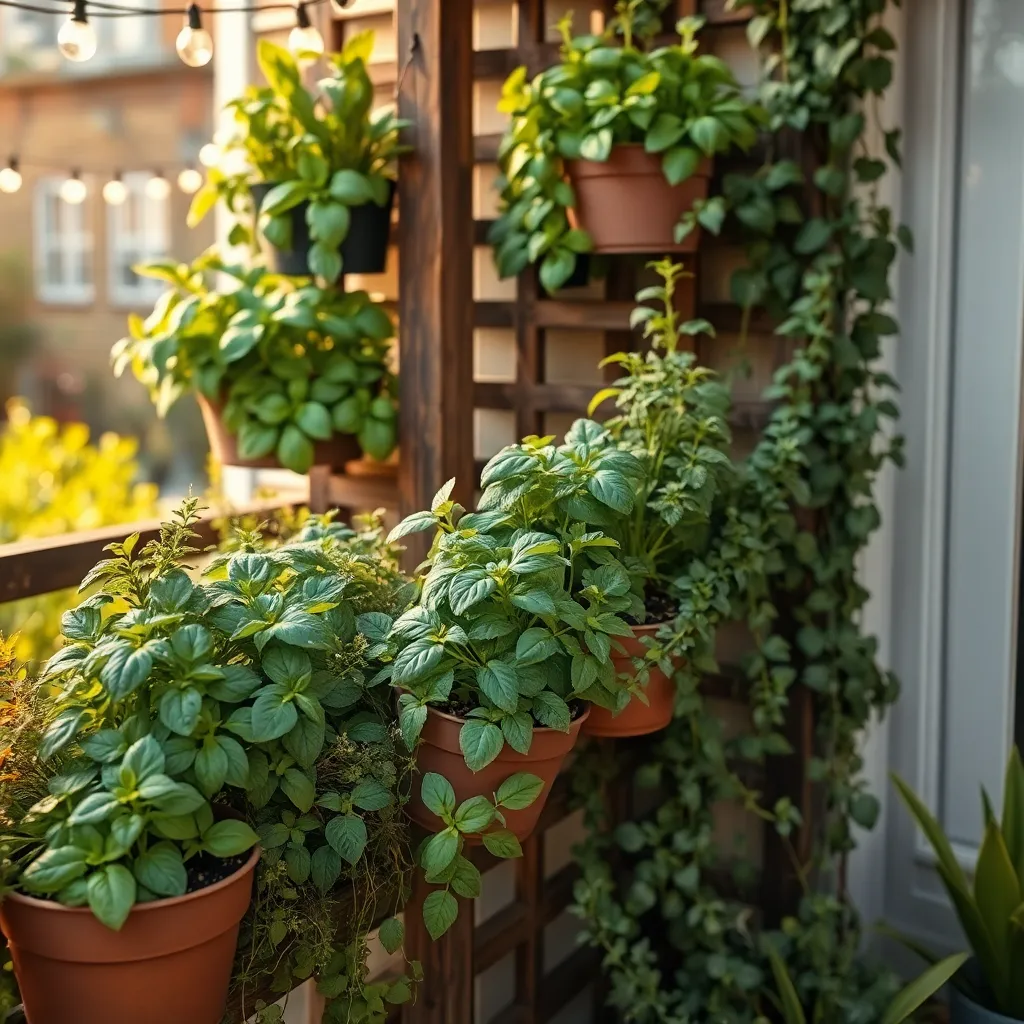
Vertical gardening is a fantastic way to maximize space, especially if you’re working with a small area. Start by using a trellis or wall-mounted planters to grow herbs like mint and oregano, which can thrive when given room to climb.
Consider using hanging baskets for herbs such as basil and thyme, which allow for easy harvesting and can beautify your space. Ensure these baskets are placed in a location where they receive ample sunlight, ideally six to eight hours a day.
For more advanced gardeners, try creating a vertical garden using tiered shelving or a living wall system. This setup allows you to grow a variety of herbs, maintaining proper spacing and air circulation to prevent diseases.
Watering is crucial in vertical gardening, as plants can dry out more quickly due to increased exposure. Use a drip irrigation system or self-watering pots to ensure consistent moisture levels, and check soil conditions regularly to prevent overwatering.
Grow Herbs in Companion Plantings
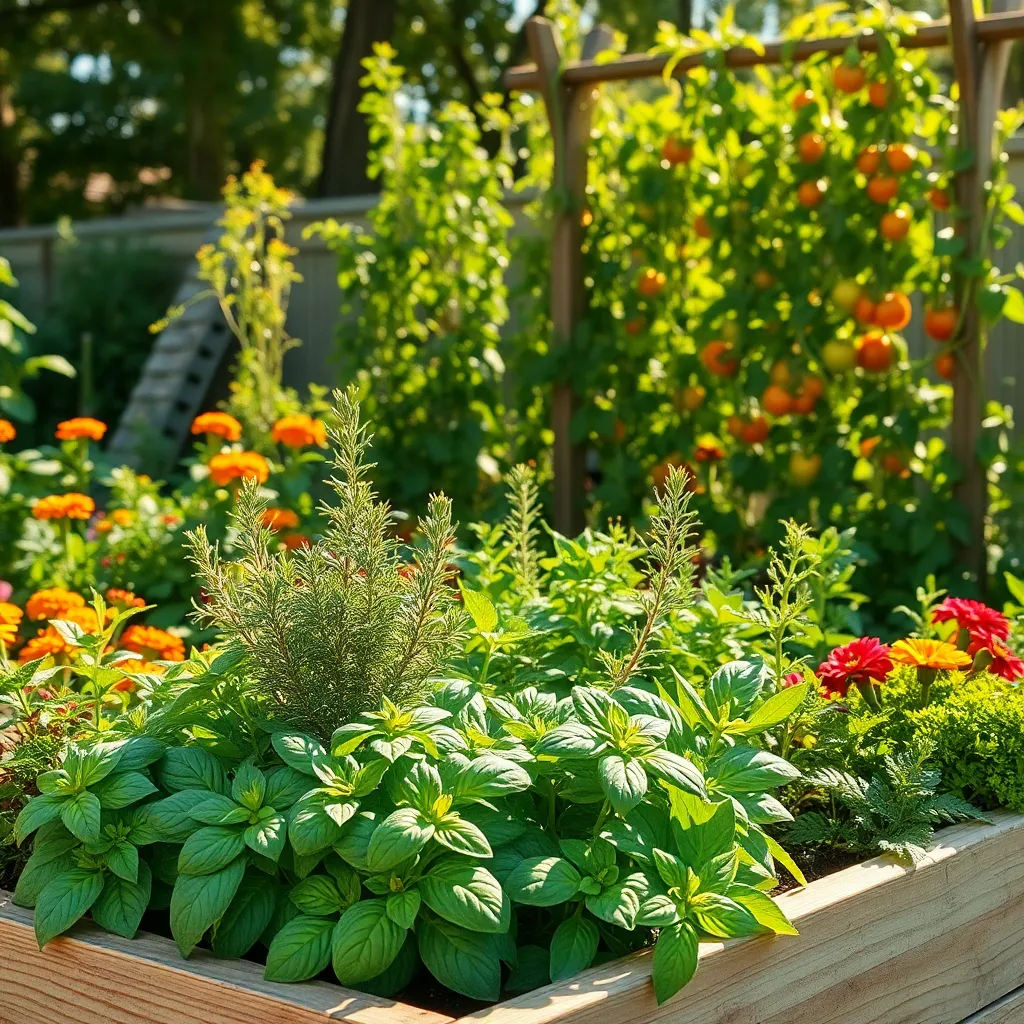
Companion planting is a strategic approach to gardening that involves growing herbs alongside other plants to enhance growth and deter pests. This technique can be particularly effective in creating a more sustainable and self-sufficient herb garden.
Consider planting basil near tomatoes as it can help improve the growth and flavor of your tomatoes. Additionally, basil can act as a natural pest repellent, helping to keep insects like aphids at bay.
Chives are another excellent companion plant, known for their ability to deter pests such as aphids and Japanese beetles. Planting chives alongside carrots or roses can provide these benefits while also adding an attractive touch to your garden landscape.
For those looking to add a fragrant touch to their herb garden, rosemary can be an ideal choice. Not only does it thrive in well-drained soil, but it also serves as a natural companion for beans and cabbage, helping to repel bean beetles and cabbage moths.
Conclusion: Growing Success with These Plants
In exploring the world of affordable herb gardening, we’ve uncovered five key relationship concepts that can enrich both your garden and personal connections: effective communication through shared gardening tasks, nurturing patience as plants and relationships grow, fostering creativity by experimenting with new herbs, building trust through consistent care, and enhancing teamwork by planning and planting together. These elements not only cultivate a thriving garden but also nurture the bonds we share with loved ones.
As a tangible next step, why not choose a day this week to visit a local nursery with a friend or partner? Select a few herbs that pique your interest, and begin your gardening journey together. This small, shared experience can lay the groundwork for deeper connections and mutual growth.
Remember to save or bookmark this article as a handy reference guide on your journey to creating both a flourishing garden and resilient relationships. With each herb you plant, envision the seeds of relationship success sprouting alongside them. By nurturing these connections, you’re not only investing in your garden but in the enduring strength of your relationships. Here’s to a future where your love and your garden both continue to thrive!

